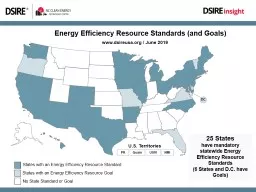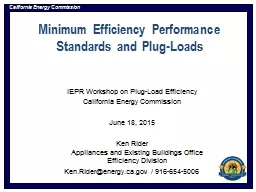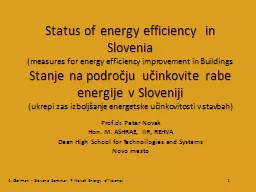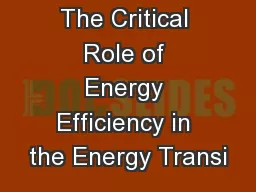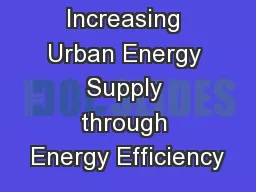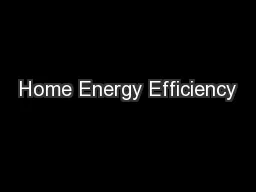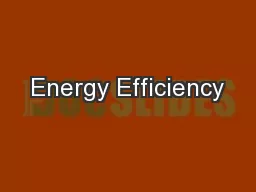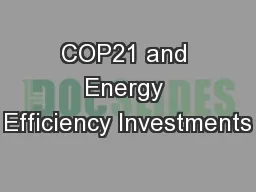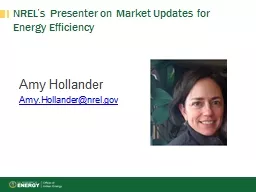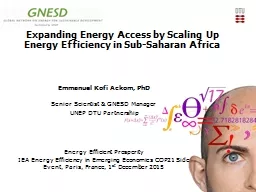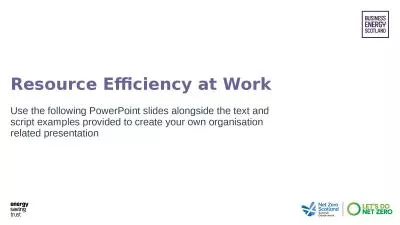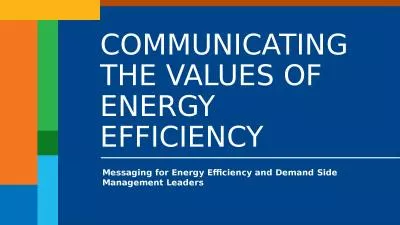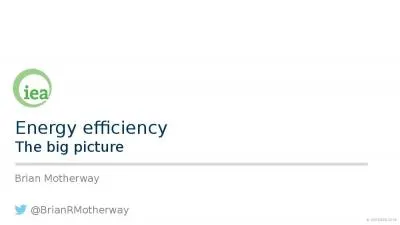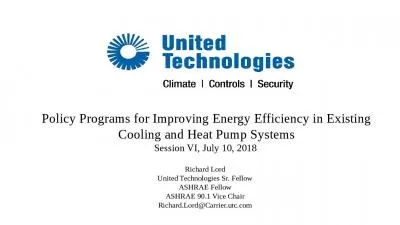PPT-Energy Efficiency Resource Standards (and Goals)
Author : hysicser | Published Date : 2020-07-02
wwwdsireusaorg June 2019 25 States h ave m andatory s tatewide Energy Efficiency Resource Standards 6 States and DC h ave Goals States with an Energy Efficiency
Presentation Embed Code
Download Presentation
Download Presentation The PPT/PDF document "Energy Efficiency Resource Standards (an..." is the property of its rightful owner. Permission is granted to download and print the materials on this website for personal, non-commercial use only, and to display it on your personal computer provided you do not modify the materials and that you retain all copyright notices contained in the materials. By downloading content from our website, you accept the terms of this agreement.
Energy Efficiency Resource Standards (and Goals): Transcript
Download Rules Of Document
"Energy Efficiency Resource Standards (and Goals)"The content belongs to its owner. You may download and print it for personal use, without modification, and keep all copyright notices. By downloading, you agree to these terms.
Related Documents

